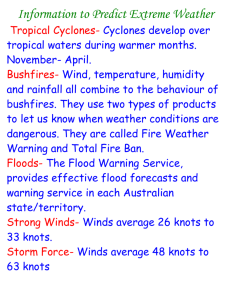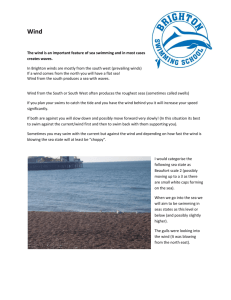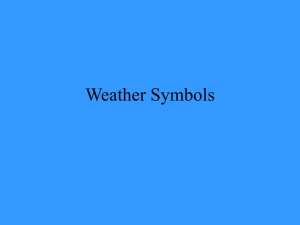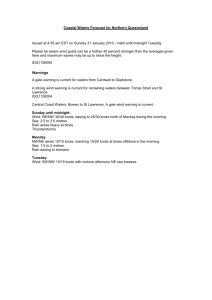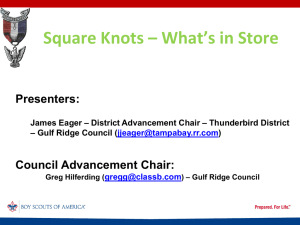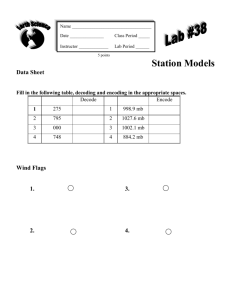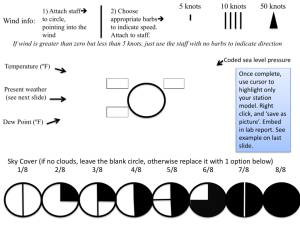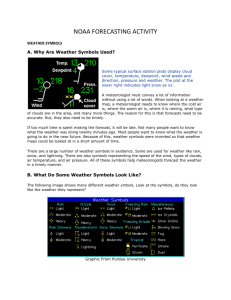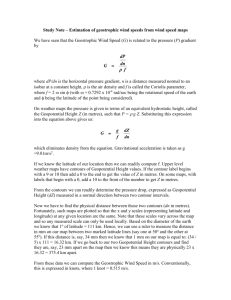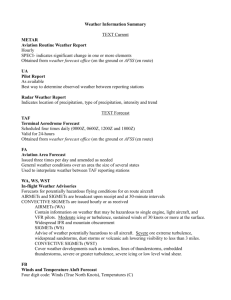Video transcript: The Station Model - Wind - e
advertisement
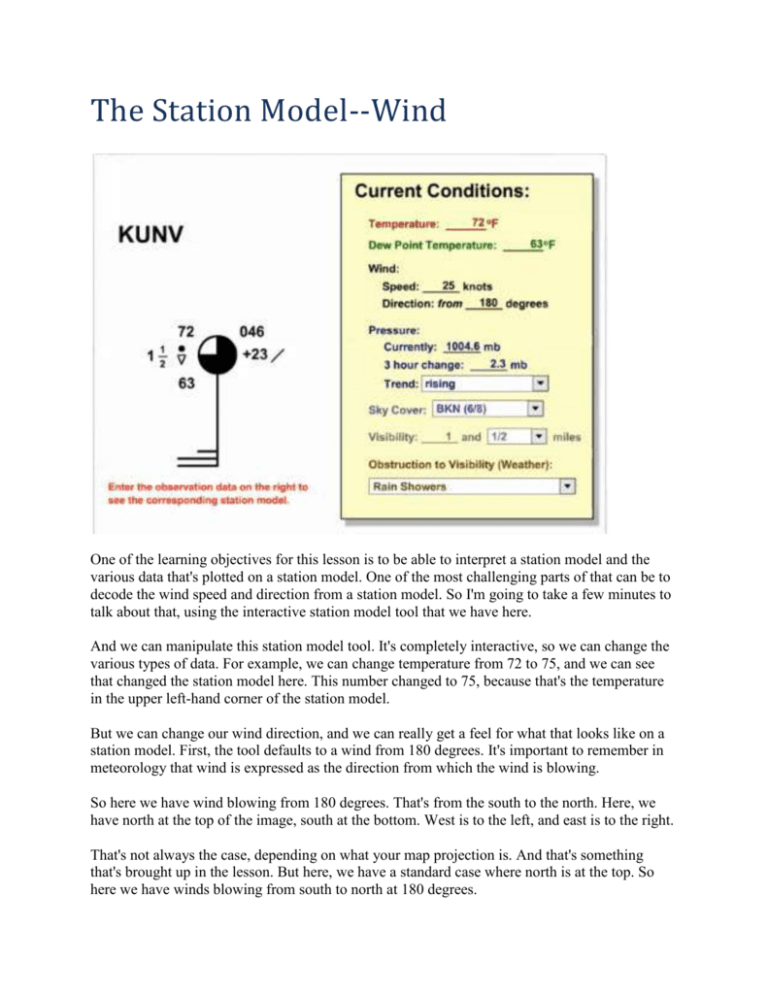
The Station Model--Wind One of the learning objectives for this lesson is to be able to interpret a station model and the various data that's plotted on a station model. One of the most challenging parts of that can be to decode the wind speed and direction from a station model. So I'm going to take a few minutes to talk about that, using the interactive station model tool that we have here. And we can manipulate this station model tool. It's completely interactive, so we can change the various types of data. For example, we can change temperature from 72 to 75, and we can see that changed the station model here. This number changed to 75, because that's the temperature in the upper left-hand corner of the station model. But we can change our wind direction, and we can really get a feel for what that looks like on a station model. First, the tool defaults to a wind from 180 degrees. It's important to remember in meteorology that wind is expressed as the direction from which the wind is blowing. So here we have wind blowing from 180 degrees. That's from the south to the north. Here, we have north at the top of the image, south at the bottom. West is to the left, and east is to the right. That's not always the case, depending on what your map projection is. And that's something that's brought up in the lesson. But here, we have a standard case where north is at the top. So here we have winds blowing from south to north at 180 degrees. We could change the wind direction on the station model tool, change it to say, 225 degrees. Now we have winds from the southwest to the northeast. And that's what it would look like on the station model. Or we could do winds from say, 80 degrees. We can change that in our tool here. And the station model would look like that, winds blowing from the east-northeast to the west-southwest. We can also tell wind speed from the station model here. The speed is 25 knots. We have two long wind barbs. Each of those represents 10 knots, and the short wind barb represents 5 knots. So we sum those together, and we get a total of 25 knots. We can change the wind speed to something like 45 knots, make it really windy. And we have four long barbs and one short barb. Sum those together to get 45 knots. I really encourage you to play around this tool and try out different things to see how the station model looks. It will help you get a feel for how to decode the station model.
